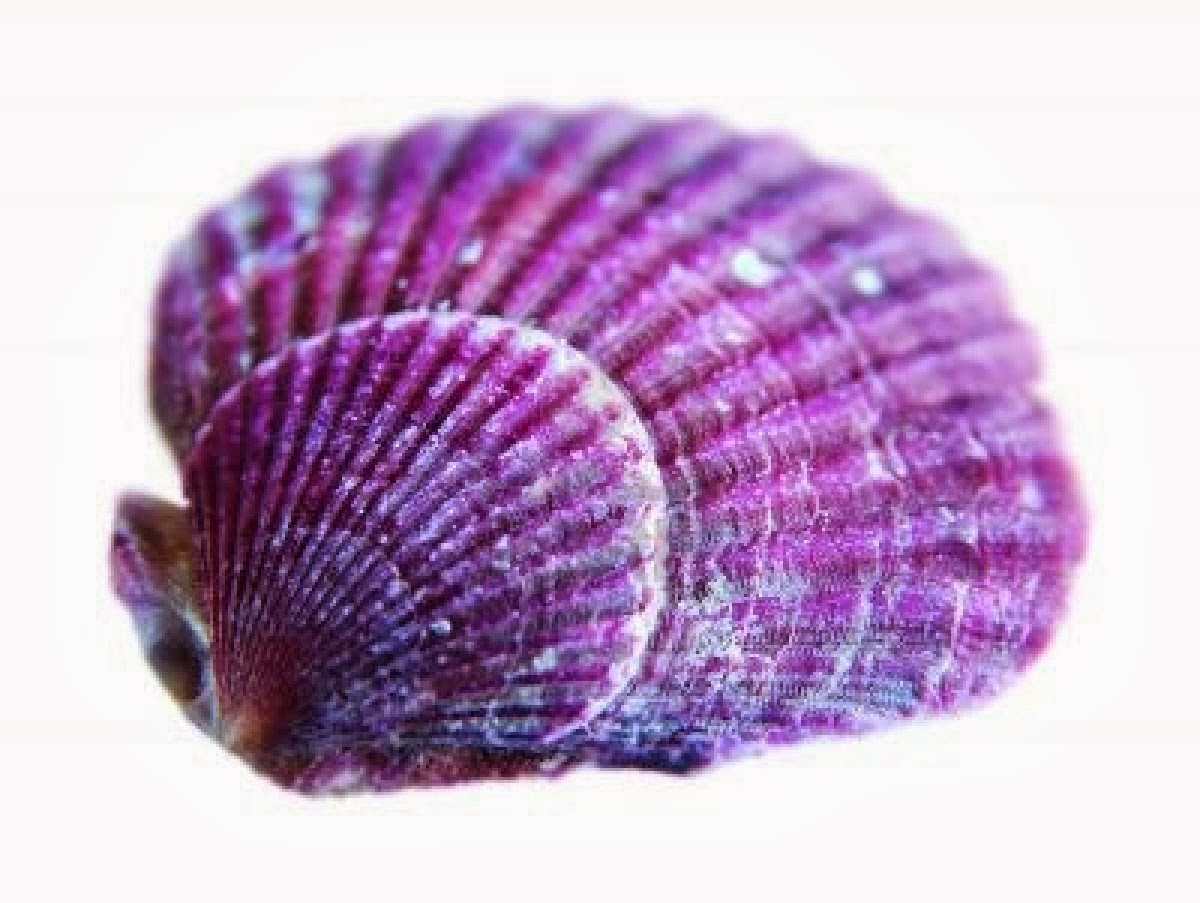Modern family coat of arms that are purple, or both blue and red are also considered balanced. Purple, red and blue are used a lot in symbolism for this reason.
The Serpent Bloodline were using it hundreds of thousands of years ago in our art and for ceremonial use. It was sported by our Queens (High Priestesses) and Kings (High Priests). The Priests wore blue and the Priestesses wore red to perform sacred ceremonies prior to the Great Rite, which led them to attaining the rank of High Priest/esses. Having become whole and balanced, they gained the right to wear purple.
The colour purple is still found in the ancient cave art our ancestors created using sticks of manganese and hematite powder. The beautiful colour was later created using a sea snail called the spiny dye-murex. This deep, rich purple dye made from this snail became known as Tyrian purple, as it was said to have been first discovered in Tyre, present day Lebanon. The dye was greatly prized in antiquity because the colour did not easily fade, but instead became brighter with weathering and sunlight.
The process of making the dye was long, difficult and expensive. Thousands of the tiny snails had to be found, their shells cracked, the snail removed. Mountains of empty shells have been found at the ancient sites of Sidon and Tyre. The snails were left to soak, then a tiny gland was removed and the juice extracted and put in a basin, which was placed in the sunlight. There a remarkable transformation took place. In the sunlight the juice turned white, then yellow-green, then green, then violet, then a red which turned darker and darker. The process had to be stopped at exactly the right time to obtain the desired colour, which could range from a bright crimson to a dark purple, the colour of dried blood. Then either wool, linen or silk would be dyed. The exact hue varied between crimson and violet, but it was always rich, bright and lasting.
Tyrian purple was later taken by the Roman Empire and later their Roman Catholic Church. We see the same story over and over again. Rome rediscovered our royal colour and took it as their own. Do you think they know its true meaning and just want to keep it from you?
It was mentioned in the Old Testament; In the Book of Exodus, when the Elohim instructs Moses to have the Israelites bring them an offering including cloth "of blue, and purple, and scarlet." Of course when you know the truth about The Great Rite and the ceremonies involved, you can see how the allegory has been placed in plain sight in the old scriptures.
Tyrian purple was later taken by the Roman Empire and later their Roman Catholic Church. We see the same story over and over again. Rome rediscovered our royal colour and took it as their own. Do you think they know its true meaning and just want to keep it from you?
It was mentioned in the Old Testament; In the Book of Exodus, when the Elohim instructs Moses to have the Israelites bring them an offering including cloth "of blue, and purple, and scarlet." Of course when you know the truth about The Great Rite and the ceremonies involved, you can see how the allegory has been placed in plain sight in the old scriptures.

No comments:
Post a Comment